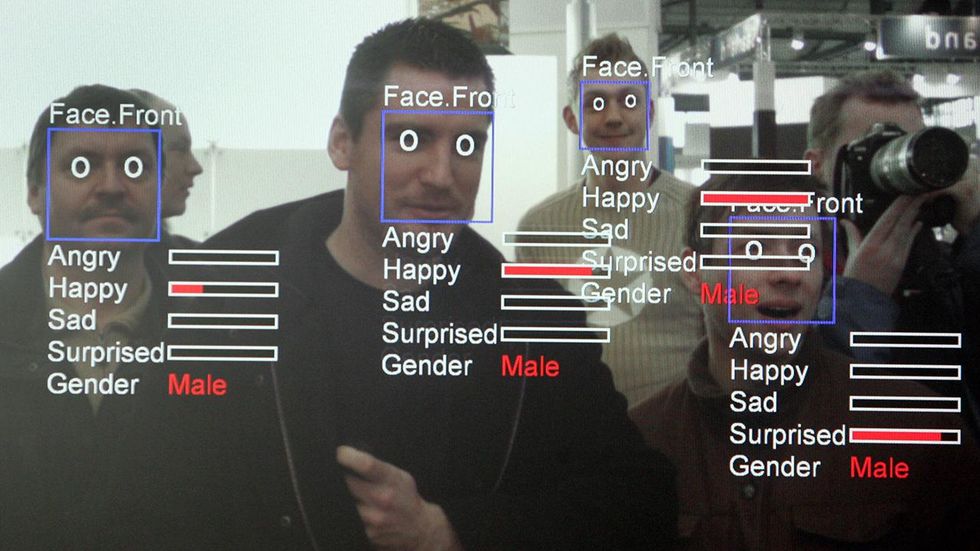
This photo illustration shows how Artificial Intelligence can be used to analyze a person's face and detect his or her mood. (JOHN MACDOUGALL/AFP/Getty Images)

An artificial intelligence system will deliver an automated “lie detector" test for travelers at certain border control checkpoints in the European Union.
Travelers in Hungary, Latvia, and Greece will receive the test through an animated AI border agent via a system called iBorderCtrl, Gizmodo reported. It’s part of a six-month pilot led by the Hungarian National Police at four border crossing points.
“We’re employing existing and proven technologies — as well as novel ones — to empower border agents to increase the accuracy and efficiency of border checks,” project coordinator George Boultadakis of European Dynamics in Luxembourg stated on the European Commission’s website. “iBorderCtrl’s system will collect data that will move beyond biometrics and on to biomarkers of deceit.”
Under the system, travelers faces are recorded and AI is used to analyze 38 micro-gestures and score each response. The virtual agent is customized based on the traveler’s gender, ethnicity, and language, according to New Scientist. Another part of the system utilizes fingerprinting, palm vein scanning, and face matching.
The first part of the two-step system happens before travelers arrive at the border. Through the system, travelers will use an online application to upload photos of their passport, visa, and proof of funds, according to reports.
Next, they will use a webcam to answer questions from a computer-animated border guard. The system utilizes "micro-expressions of travelers to figure out if the interviewee is lying," according to the European Commission's website.
Travelers are also informed about their rights and travel procedures, and they’re given advice that discourages illegal activity.
After arriving at the border, travelers who were flagged as low risk will receive a quick review of the information they submitted. Those considered to be a higher-risk will go through a more detailed review.
“Border officials will use a hand-held device to automatically cross-check information, comparing the facial images captured during the pre-screening stage to passports and photos taken on previous border crossings," the European Commission’s website states. “After the traveler’s documents have been reassessed, and fingerprinting, palm vein scanning and face matching have been carried out, the potential risk posed by the traveler will be recalculated. Only then does a border guard take over from the automated system.”
In its current state, the pilot program is not expected to prevent anyone from crossing the border.
During trial testing, the system had about a 76 percent accuracy rate, and it is hoped that can be increased to 85 percent, developers reportedly said.
But with more than 700 million people traveling through the EU every year, that could still result in a “troubling number of misidentified liars," Gizmodo noted.
The European Commission's website claims the program is designed to alleviate the "huge volume of travelers and vehicles," which makes it difficult for agents to "uphold strict security protocols – checking the travel documents and biometrics of every passenger."
The system is also touted as a way to "secure land border crossings to facilitate the work of border guards in spotting illegal immigrants, and so contribute to the prevention of crime and terrorism."